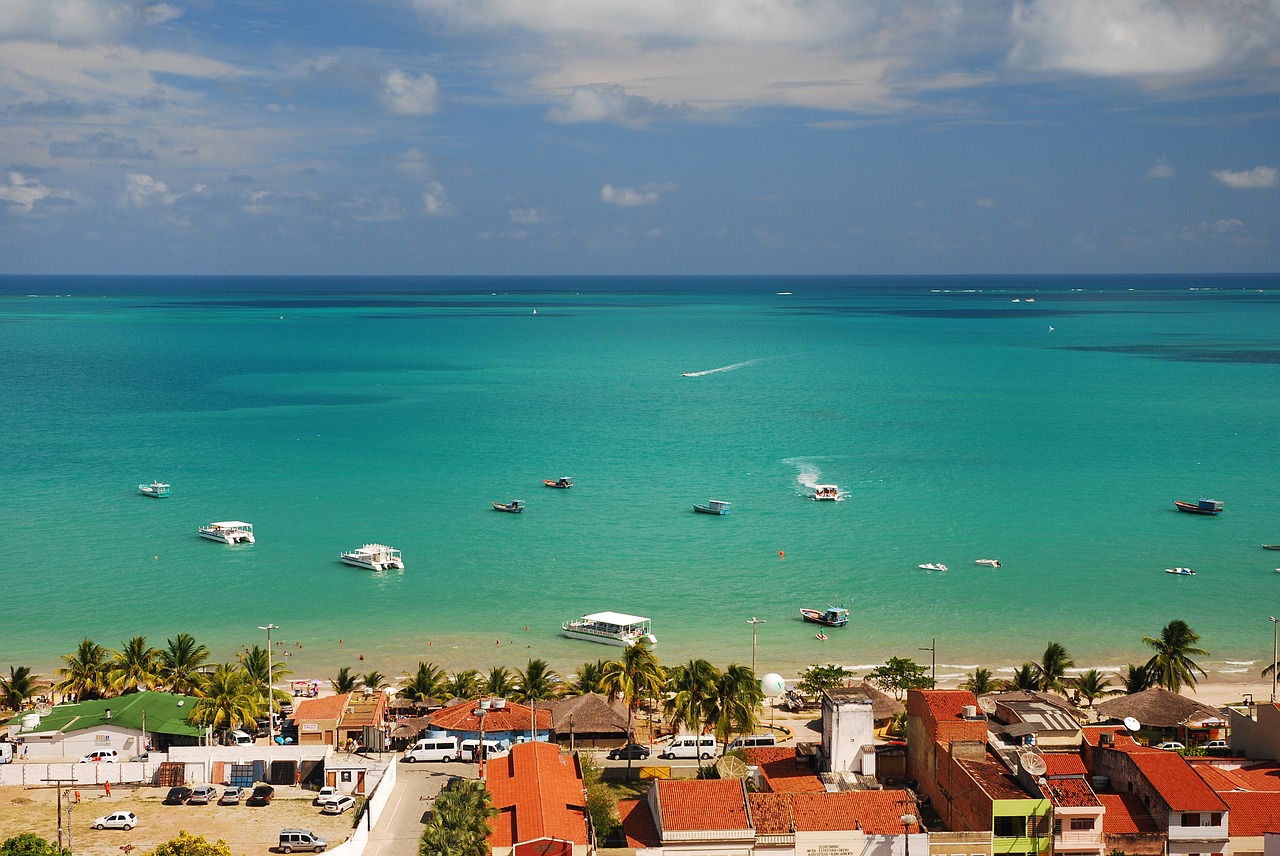Este post também está disponível em:
Português
English
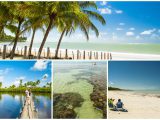
Rota Turística or Costa dos Corais on the north coast of Alagoas has the second largest reef bank in the world and attracts tourists looking for deserted beaches with warm waters, quality gastronomy, comfort of rustic inns by the sea and ecologically sustainable tourism.
The Tourist Route in Alagoas is approximately 300 km long and surrounded by a natural barrier built thousands of years ago by corals.
The fantastic Tourist Route or Costa dos Corais is located on the north coast of Alagoas and attracts tourists looking for deserted beaches with warm waters, quality gastronomy, comfort of rustic inns by the sea and ecologically sustainable tourism.
The region of the Tourist Route of Alagoas, which begins a few kilometres from Maceió and ends on the border of Pernambuco, contains the second largest reef bank in the world, second only to the Great Barrier Reef in Australia.
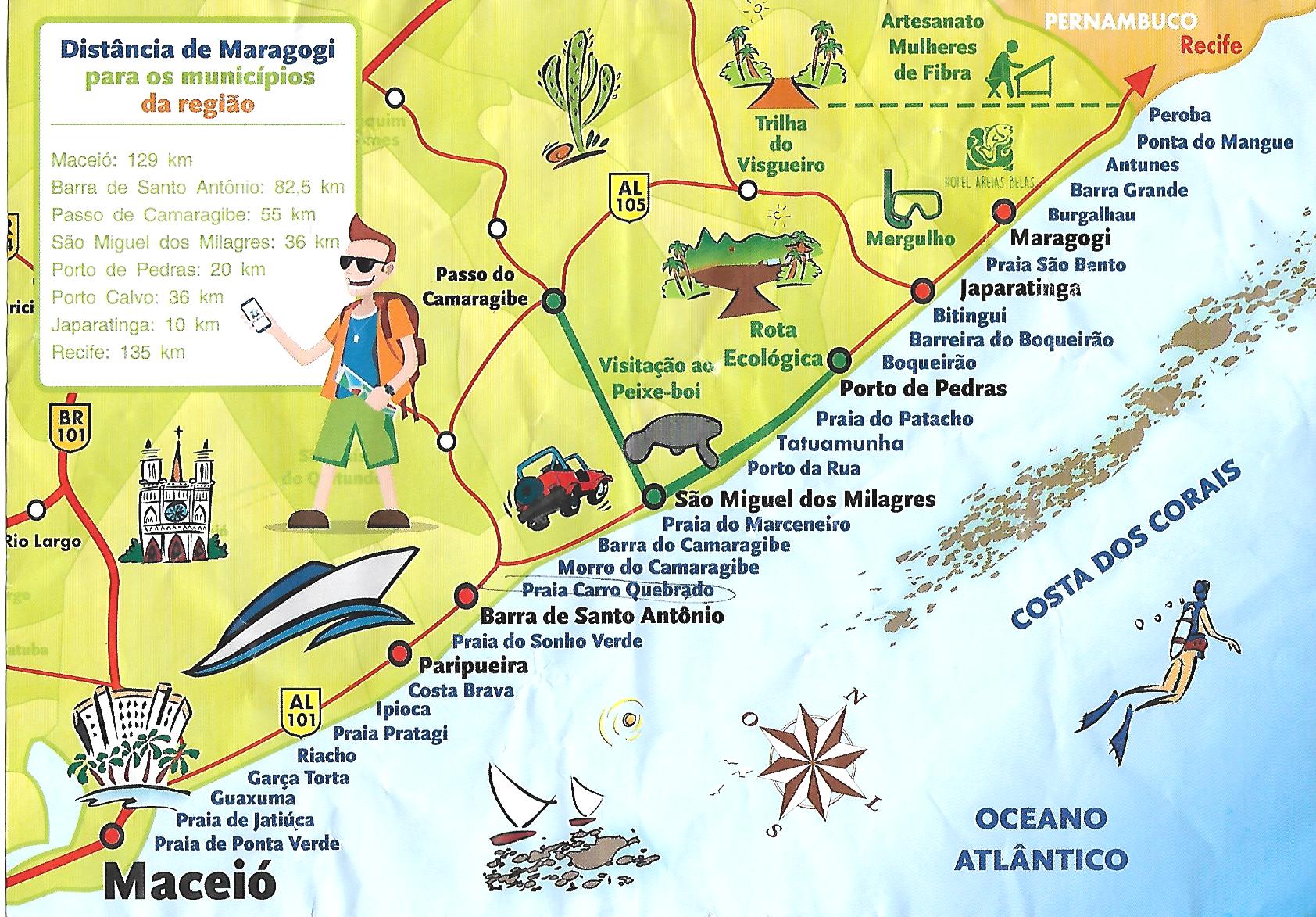
Tourist Route of the north coast of Alagoas or Costa dos CoraisAt low tide it is possible to swim in the hundreds of natural pools all this alongside a huge variety of fish.
The region has been preserved thanks to the layout of the coastal road of Alagoas, which at the height of Barra de Santo Antônio makes a diversion inland and only returns to the coastal coast in Maragogi.
Video of the Coral Coast or North Coast of Alagoas

Costa dos Corais ou Litoral Norte de Alagoas
The little more than 40 km of beaches between Barra de Camaragibe and Japaratinga are served by a secondary road, with a stretch of tarmac (to Porto de Pedras), a ferry (to cross the Manguaba River between Porto de Pedras and Japaratinga) and a stretch that alternates dirt road with cobblestones (in Japaratinga).
Even more so if the chosen destination is the Costa dos Corais Environmental Preservation Area (APA), a region located on the north coast of Alagoas that got its name because it has, a few kilometres from the coast, the second largest coral reef in the world, second only to the coral wall of the Australian Sea.
We travelled the 130 km of the Tourist Route of the North Coast of Alagoas to show you some of the main attractions of the tourist region that has a set of exuberant beaches, in urban or almost deserted areas, worthy of postcards.
The route, which starts in Maceió, passes through several white sand beaches with natural pools very close to the coast, ends in Maragogi, the second tourist pole of the state, which is on the border between Alagoas and Pernambuco.
Tourist Route from Maceió to Maragogi

6 km – Guaxuma Beach, Garça Torta and Riacho Doce
The beaches located at the exit of Maceió for those who head towards the North Coast of the state, the beaches of Guaxuma, Garça Torta and Riacho Doce summarise well the potential of the natural beauties that are yet to come along the route that has surprising landscapes.
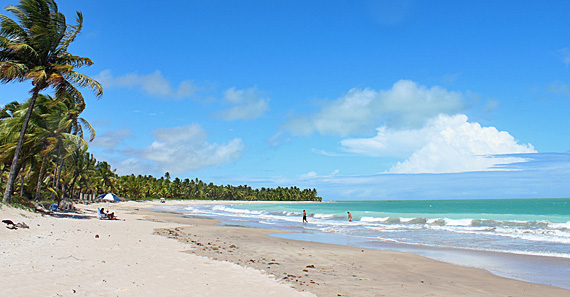

Praia de Guaxuma em Alagoas11:38
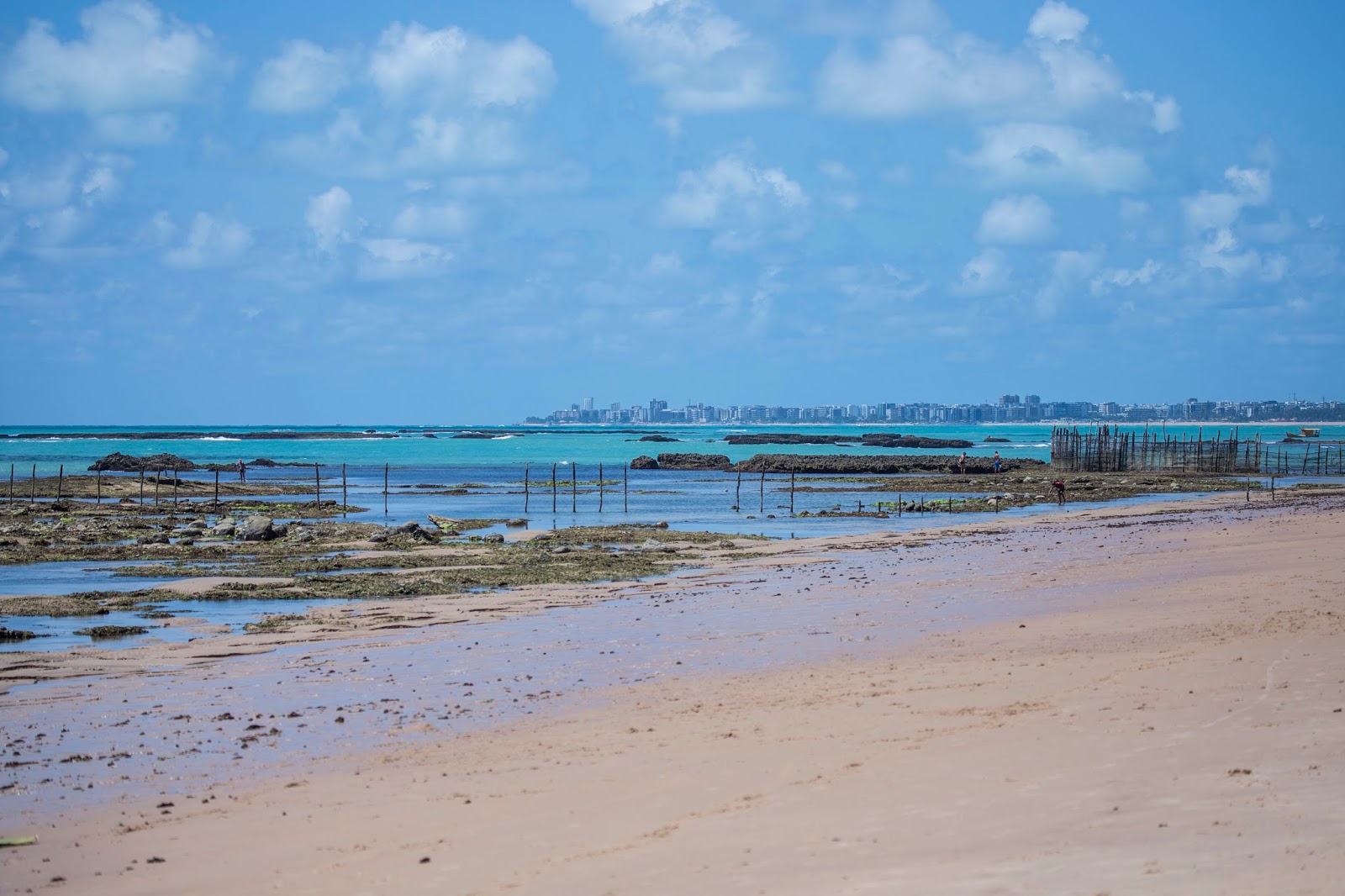
Praia de Garça Torta em Alagoas04:03

Praia de Riacho Doce em Alagoas01:33
A few kilometres from the central area of the capital of Alagoas, Guaxuma is a beach with rough seas, white sand, blue water and the city of Maceió framed on the horizon.
The place is favourable for those looking for waves to practice water sports such as surfing, windsurfing and other modalities that depend on the rough sea.
In Garça Torta and Riacho Doce, a few steps from Guaxuma, the sea, especially at low tide, is more inviting for swimming in warm and calm waters.
With a scenario marked by the coming and going of rafts and fishing boats, another feature of the place are the rocks that dot the sea, forming hundreds of natural pools very close to the beach.
The popular gastronomy is also a strong point of the three neighbourhoods that were born from fishing villages.
Highlights include the fish and seafood prepared in the beach bars and the handmade treats – cakes, brasileiras, suspiros, cocadas and pé de moleque – made in wood ovens by the boleiras of Riacho Doce.

12.5 km – Mirante da Sereia
A mermaid (sereia) that gives the place its name, the Mirante is distinguished by uniting three scenarios in a single stretch.
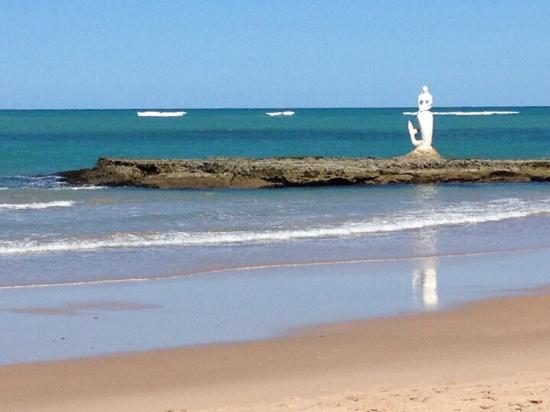
Praia Mirante da Sereia em Alagoas
Thus, on one side, the attraction for bathers is the mix of fresh and salt water formed by the meeting of the river with the sea; on the other, the attraction is the natural stone wall that reduces the intensity of the waves forming a large pool by the sea – a point much coveted by the regulars of the place.
For those looking for rough seas with waves for surfing, the Mirante da Sereia is also the place, since there are stretches of open sea with waves that reach the beach.
With several bars and restaurants with affordable prices, the place usually registers large crowds on holidays and weekends.

18 km – Ipioca Beach
Ipioca is a place to be appreciated from different angles. From the top, the exuberant view of the white sand beach, blue sea and coconut trees that give charm to the place is rewarding and worth the climb through the narrow streets of the neighbourhood.

Praia de Ipioca em Alagoas
From below, the pleasure of those who arrive at this place is to enjoy every stretch of the long strip of sand, the calm sea with its many natural pools, and the shadows of the coconut trees.
In this tropical paradise, the aromas and flavours are also seductive. Whether in the exquisite restaurants located at the top and on the edge of the beach, or in the simple stalls set up by the locals around the motorway, which offer everything from seasonal fruit to sweets and seafood sold fresh.
On the last beach on the north coast of Maceió, summer becomes a more than attractive season. Especially given the small number of people who frequent the place, which, despite urbanisation, remains in many stretches as a semi-deserted beach.
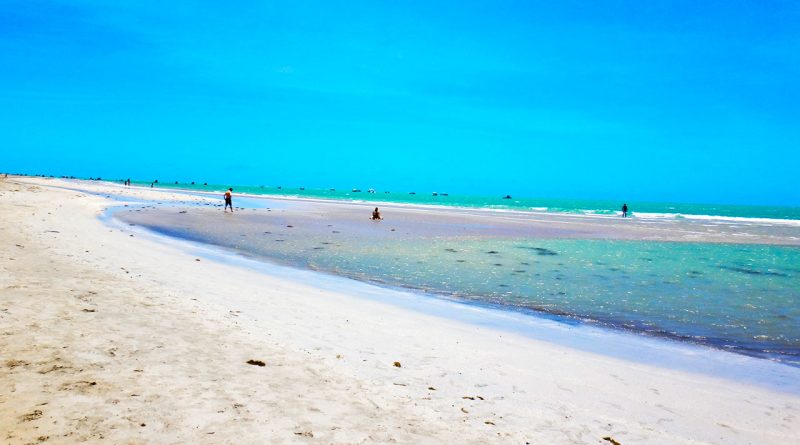
27 km – Paripueira Beach
The beach of Paripueira located within the APA Costa dos Corais, where it begins to register the first signs of the coral wall in the sea, Paripueira stands out for the waters, warm, transparent and tame, provided by the various sandbanks.
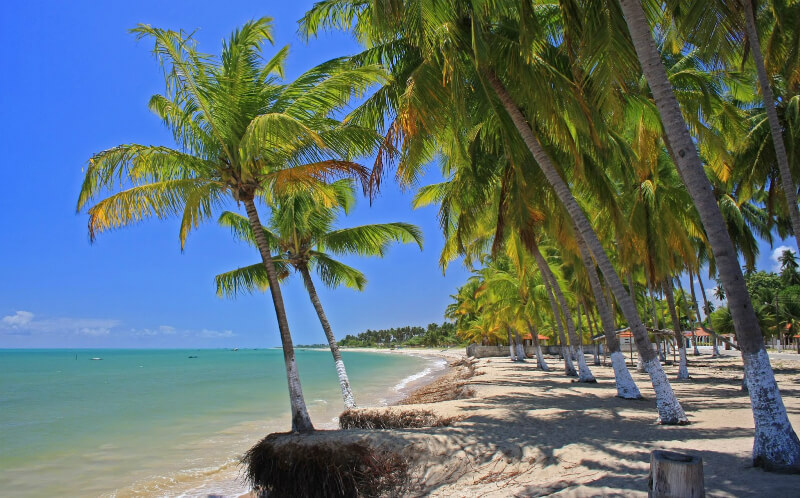
Praia de Paripueira em Maceió
Thus, during low tide it is possible to walk in the sea with water below the knee. Reason that puts the beach as an ideal point for children’s fun.
In Paripueira it is still worth exploring, with long stops for swimming and contemplation, the beaches of Sonho Verde and Tabuba, points where several bars and restaurants are located.
For those looking for a little more of the summer attractions of the Northeast, the natural pools of Paripueira is an invitation to contemplation and diving. There, in addition to the coral formations, it is possible to dive alongside schools of small fish and other marine species.
Located 2 km from the beach, the trip to the natural pools is made by catamaran or speedboat. Boarding always takes place at low tide and costs an average of R$ 40 per person in high season.
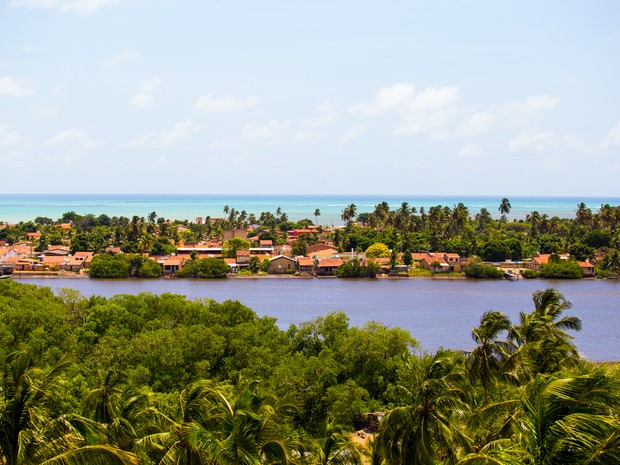
37 km – Barra de Santo Antônio
In Barra de Santo Antônio, on the Tourist Route of the north coast of Alagoas, to reach the sea you have to cross the river by a concrete bridge to the peninsula known as Ilha da Crôa.
From there the visitor has the option to enjoy one of the stretches of the local beach, or drive to the famous Carro Quebrado beach, a tour that must be done at low tide and with the guidance of local guides.
Considered one of the most beautiful beaches in Brazil, Carro Quebrado conquers by the set of cliffs with coloured sands and greenish sea.
The journey can also be made by sea in a speedboat, a service offered by some bars and restaurants in the region. Despite the difficulty of access, Carro Quebrado is a place that the sacrifice already pays off on the way, due to the natural beauties that accompany the visitor at every step.
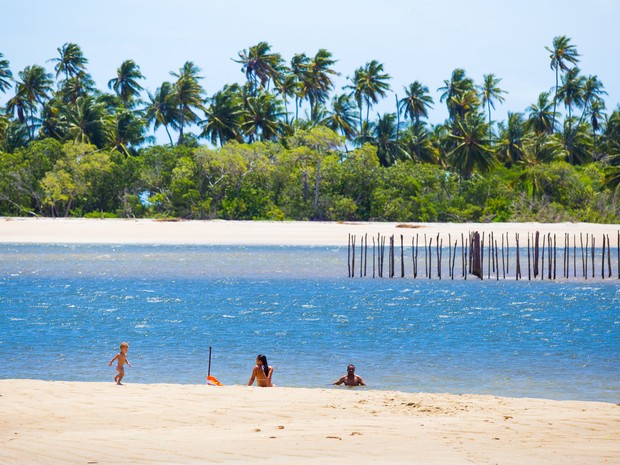
79 km – Barra do Camaragibe
The scenery changes in Barra do Camaragibe according to the tide table. With sand banks and the protection of the coral wall in the open sea, the place is even more beautiful at low tide, when natural pools are formed along the coast.
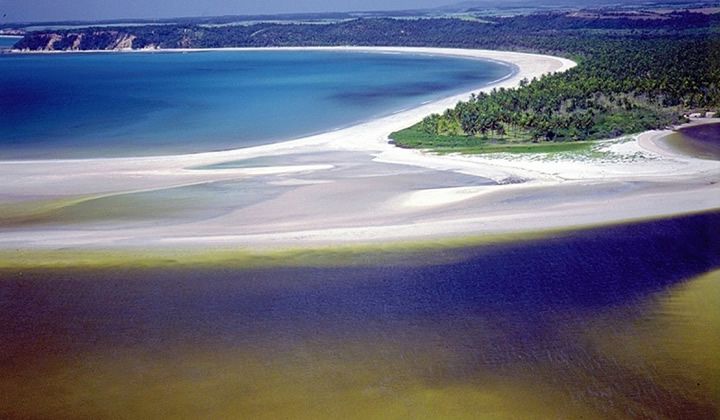
Barra do Camaragibe em Alagoas
Among so many stretches of beaches with warm waters and different tones, it is worth highlighting the mouth of the Camaragibe River, where it is possible to divide between fresh and salt water bathing, observing the diversity of the ecosystem of the place.
You can also enjoy the tranquillity of Marceneiro beach, a fisherman’s village that still has bucolic spots shaded by coconut trees, a favourable place for those seeking fun and tranquillity in the midst of nature.
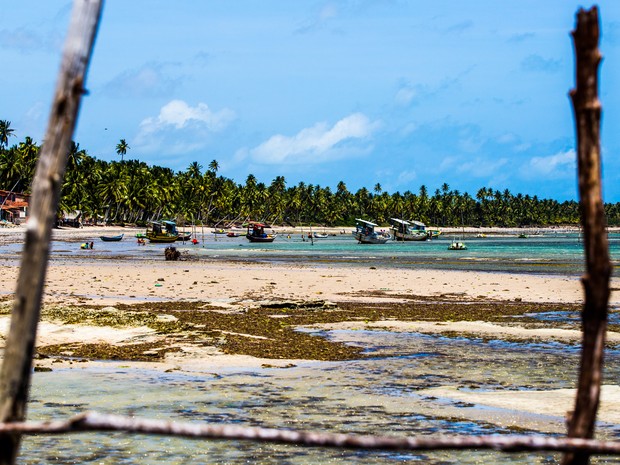
81 km – São Miguel dos Milagres
Main stretch of the Tourist Route of the north coast of Alagoas, the old fishing village of São Miguel dos Milagres is a destination of refinement.
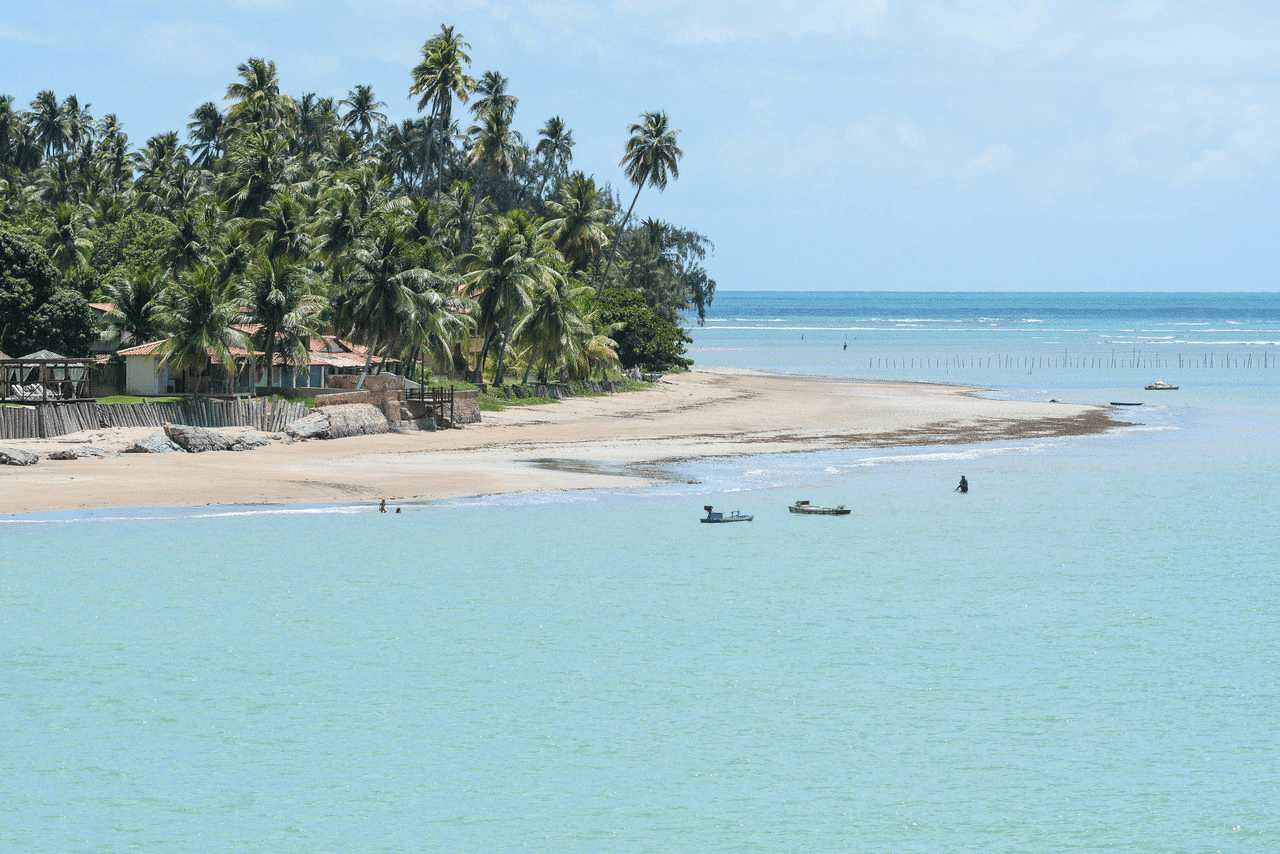
Praia do Toque em São Miguel dos Milagres - AL
With a bucolic landscape formed by semi-deserted beaches of warm waters and immense strips of coconut trees, the town, with the appearance of a village, has a slow, quiet pace and excellent charming inns.
As time is slow in São Miguel dos Milagres, it is best to enjoy every minute exploring the sandy beaches, the natural pools with raft navigation and of course, a good conversation and the handicraft production of the locals who make various decorative and utilitarian objects with coconut tree stalks and straw.
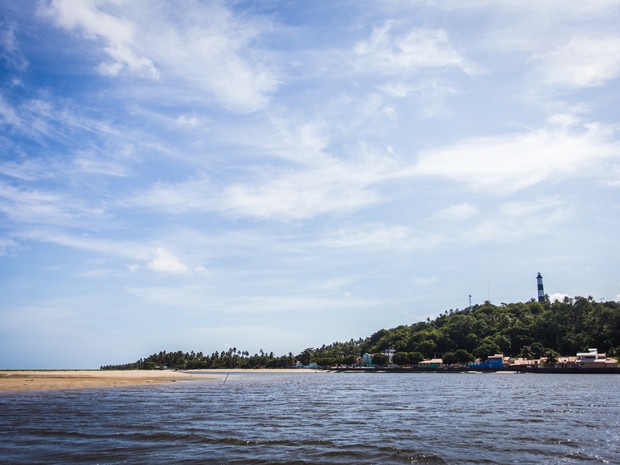
95 km – Porto de Pedras
The huge lighthouse at the top of the hill that guides boats at night welcomes those arriving in Porto de Pedras.
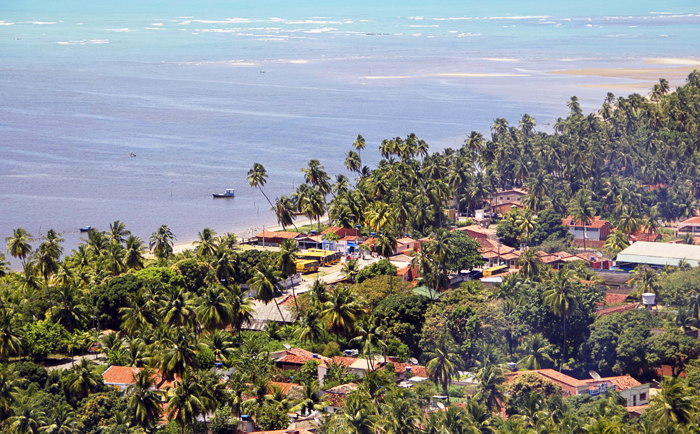
Divided between the sea and the Manguaba River, the place that has historic buildings from the time of the Portuguese and Dutch occupation in Alagoas, is also known as the city of the marine manatee, due to the environmental work of reintroducing these animals into nature.
Beautiful by nature and by human interventions, Porto de Pedras is home to postcard-worthy beaches, such as Patacho and Toque.
Another place worth visiting is the village of Tatuamunha, where you can take a rowing raft ride along the river with the locals and enjoy immense preserved mangroves, rustic wooden bridges and the owners of the place: the manatees that swim freely following the movement of the boats.
Another attraction of Porto de Pedras is the commerce that has formed along the narrow road that crosses the villages. In the face of the coming and going of tourists, locals sell fruit, sweets and decorative objects made from materials typical of the coastal region.
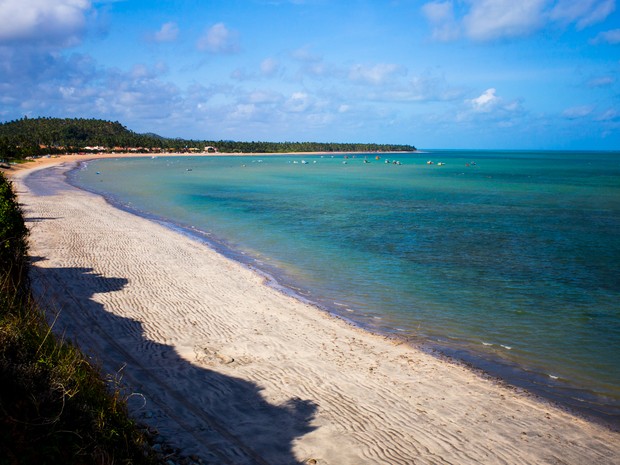
124 km – Japaratinga
To get to Japaratinga on the Tourist Route of the north coast of Alagoas from Porto de Pedras, you have to sail again. This time, on a ferry that transports vehicles and people crossing the Manguaba River.
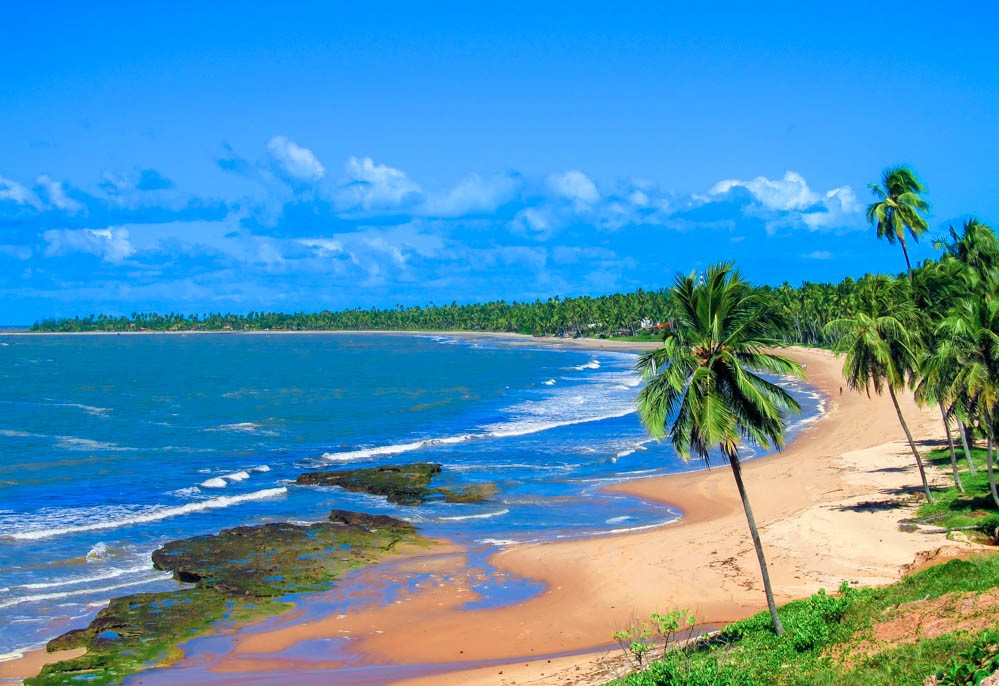
Japaratinga em Alagoas
The journey by passenger car is short, the journey is fast and the scenery exuberant.
As soon as you disembark the visitor will realise that Japaratinga is a place that extends following the contour of the sea.
With a line of approximately 15 km of white sand beaches, blue sea, reefs and cliffs, the destination is a place that is already worth being appreciated along the way due to the geography that favours the view of the sea.
Among the various stretches of beach, the following stand out: Pontal Boqueirão, where the river meets the sea; Boqueirão, with its large strip of coconut palms and beach in the shape of an open mouth, with spots suitable for surfing, swimming and fishing; Barreiras do Boqueirão, with cliffs, natural viewpoint and freshwater spouts.
In addition to the shallow sea beaches such as those of the village Bitingui.
In the central area of the city, a few kilometres from the coast are the natural pools of Picão.
All along Japaratinga, a city that stands out for its gastronomic potential, with emphasis on seafood such as octopus and lobster, there are numerous commercial establishments such as inns, hotels, bars and restaurants.
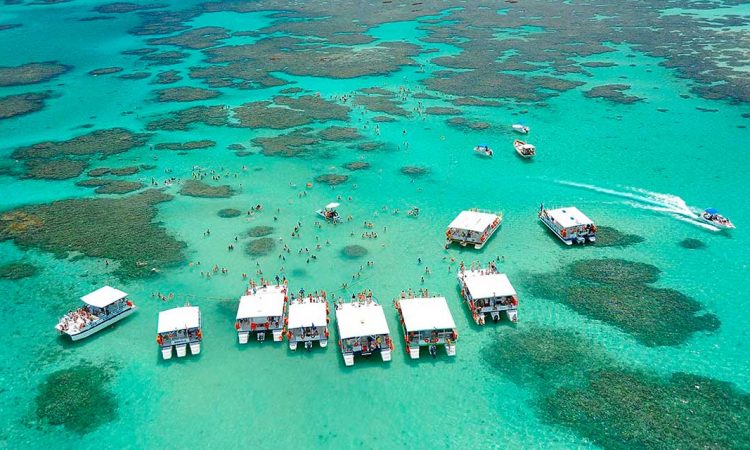
130 km – Maragogi
In the second tourist centre of Alagoas, the name paradise beach is redundant.

Maragogi conquers visitors for the variety of its beaches, which differ at each stretch.
Among the most coveted by those who know the region are the districts of São Bento, Barra Grande, Antunes, Ponta de Mangue and Peroba. In addition, of course, to the most famous natural pools in the Northeast, the Galés de Maragogi, an immense bank of sand surrounded by corals that are 6 km from the coast.
Among so many options there are several ways to explore this destination of white sand beaches surrounded by coconut trees and sea of blue and green tones, but none is as pleasant as exploring each stretch by buggy, making stops to enjoy the scenery, the sea and the surprises that Maragogi holds.
If the city centre is where the hustle and bustle is concentrated, with bars and restaurants, the more distant beaches are delegated to tranquillity and peace. A destination between two capitals – Maceió and Recife – Maragogi has elements to please different types of travellers.
Tourism and Travel Guide to the North Coast of Alagoas and the Northeast.

